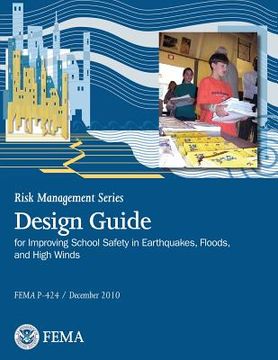Risk Management Series Publication: Design Guide for Improving School Safety in Earthquakes, Floods, and High Winds (FEMA P-424 / December 2010) (en Inglés)
Reseña del libro "Risk Management Series Publication: Design Guide for Improving School Safety in Earthquakes, Floods, and High Winds (FEMA P-424 / December 2010) (en Inglés)"
Our society places great importance on the education system and its schools, and has a tremendous investment in current and future schools. Nearly 50 million students were expected to attend approximately 99,000 public elementary and secondary schools in the fall of 2009, with an additional 5.8 million expected to attend private schools. The sizes of these school facilities range from one-room rural schoolhouses to citywide and mega schools that house 5,000 or more students. The school is both a place of learning and an important community resource and center. This publication is concerned with the protection of schools and their occupants against natural hazards. Architects and engineers deal with natural hazards in building design and construction and building codes have provisions for protection against natural hazards. This manual addresses two core concepts: multi-hazard design and performance-based design. Multi-hazard design recognizes the fundamental characteristics of hazards and how they interact, so that design for protection becomes integrated with all the other design demands; and Performance-based design suggests conducting a systematic investigation to ensure that the specific concerns of building owners and occupants are addressed, rather than relying on only the minimum requirements of the building code for protection against hazards. Building codes focus on providing life safety, while property protection is secondary. Performance-based design provides additional levels of protection that cover property damage and functional interruption within a financially-feasible context. This publication stresses that the identification of hazards and their frequency and careful consideration of design to resist these hazards must be integrated with all other design issues, and be included from the inception of the site selection and building design process. Although the basic issues to be considered in planning a school construction program are more or less common to all school districts, the specific processes differ greatly because each school district has its own approach. Districts vary in size, from a rural district responsible for only a few schools, to a city district or statewide system overseeing a complex program of all school types and sizes. Any of these districts may be responsible for new design and construction, renovations, and additions. While one district may have a long-term program of school construction and be familiar with programming, financing, hiring designers, bidding procedures, contract administration, and commissioning a new building, another district may not have constructed a new school for decades, and have no staff members familiar with the process. This publication is intended to provide design guidance for the protection of school buildings and their occupants against natural hazards. It focuses on the design of elementary and secondary schools (K-12), as well as repair, renovation, and additions to existing schools. It is one of a series of publications in which multi-hazard and performance-based design are addressed (FEMA 577, Design Guide for Improving Hospital Safety in Earthquakes, Floods, and High Winds, and FEMA 543, Design Guide for Improving Critical Facility Safety from Flooding and High Winds). This publication considers the safety of school buildings to occupants, and the economic losses and social disruption caused by building damage and destruction. The volume covers three natural hazards that have the potential to result in unacceptable risk and loss: earthquakes, floods and high winds. A companion volume, FEMA 428, Primer to Design Safe School Projects in Case of Terrorist Attacks, covers the manmade hazards of physical, chemical, biological, and radiological attacks. This publication is intended to assist design professionals and school officials involved in the technical and financial decisions related to school construction, repair, and renovations.

